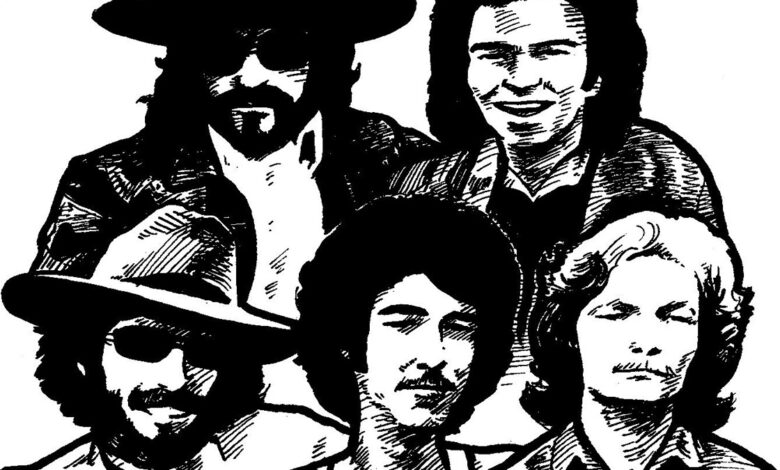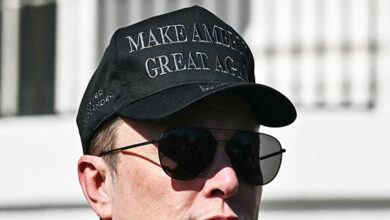JD, Foster & Eastman made sublime country rock but didn’t leave a trace


Since 2005 Plastic Crimewave (aka Steve Krakow) has used the Secret History of Chicago Music to shine a light on worthy artists with Chicago ties who’ve been forgotten, underrated, or never noticed in the first place.
One of my favorite ways to find subjects for the Secret History of Chicago Music is to track down and interview an artist whose story isn’t published anywhere. Obviously this restricts me to living people, but the excitement of learning something that almost nobody else knows makes up for that. Even popular live bands can fall into the memory hole if they don’t release a recording, but sometimes they get as far as cutting demos. And when a music-history nerd like me can get his hands on those demos, it’s always a treat—especially when the tunes are as good as what I’ve heard from early-70s country-rock outfit JD, Foster & Eastman.
Drummer Steve Jones, whose last name occasionally got tacked onto that already unwieldy moniker, alerted me to the band’s existence. Born in 1950 and raised in Brooklyn, Jones later played in another 70s Chicago group that did well on the local concert circuit but never got a record out: Fawn, a Secret History subject in 2011. Jones helped me secure interviews with guitarists Larry Foster and George Eastman. I didn’t correspond directly with bassist JD Smith, but he met up with Eastman and Jones for lunch to help sort out the group’s story.
Foster has perhaps the most impressive musical CV of the group. He was born in Chicago on December 17, 1944, and in 1961 he joined his first band, the Coachmen. Their lineup included George Edwards (later of psychedelic outfit H.P. Lovecraft) and Skip Haynes (who recorded “Lake Shore Drive” in 1971 as part of Aliotta Haynes Jeremiah).
In college at Purdue University in the early 60s, Foster met Mickey Clark, and with Edwards they formed a trio in Chicago called the Village Singers. “We traveled the folk circuit, Chicago down to Fort Lauderdale, for spring break in 1964,” Foster says. “When we returned to Chicago, George went to California, but Mickey and I kept touring.”
The duo met singer-songwriter Marita Crites (who became Marita Foster when she and Larry married in ’66) and formed the New Village Singers, who played the midwest and east coast. They made a lucky connection at a gig in New York in 1965. “We were seen at an open mike at the Bitter End and signed by Barbra Streisand’s management company in 1965,” Foster says.
Renamed the Three of Us, the group also released a few singles on Kapp Records. They played on a wide range of impressive bills, sharing stages with folkies (Judy Collins, Gordon Lightfoot), soulful groups (the Four Tops, the Coasters), and garagey New York bands (the Blues Magoos, the Magicians).
The trio’s promising career was derailed when Foster was drafted in 1966. “Even Streisand’s lawyers can’t keep me out, so I go in and serve my time,” Foster says. “End up in Korea for 13 months, doing codes and crypto on remote radio rigs.” After he was discharged in ’68, the budding singer-songwriter used G.I. Bill benefits to attend the Illinois Institute of Technology, where he met George Eastman and Steve Jones.
Eastman was born on Christmas Day in the late 40s (he prefers to keep the year “squishy”) and grew up in New York City. He came to Chicago in 1967 to study photography at IIT’s Institute of Design. “The band was born out of a regular Thursday-night get-together to play, write, and record music at a Columbia College studio,” Eastman recalls. “I joined those sessions in late 1972 or early 1973.” Unfortunately, the tapes from those gatherings have been lost.
JD Smith had been in a band called Franny and Zooey, named after the 1961 J.D. Salinger book. “That’s when he got the nickname ‘JD,’” Jones says. “He was approached by George to join him and Larry in 1973. I was added in the summer of ’73.”
“Steve joined after we had started at some smaller venues and decided to create a bigger sound and play some larger and louder venues,” Eastman says. “Music of the day demanded a more rock ’n’ roll–infused sound (also my leaning), not entirely different from the Eagles’ journey at around the same time. . . . That said, our trip turned out a bit differently.”
JD, Foster & Eastman originally had a folk-rock sound a la Crosby, Stills & Nash, but their only formal recording session documents a sublimely twangy country-rock outfit. They cut the demos I’ve mentioned at Streeterville Studios on Grand Avenue, working with Gary Loizzo (front man of the American Breed and longtime producer for Styx). The results are easily on par with Poco, Pure Prairie League, and the Flying Burrito Brothers.
When I first heard the arrestingly hooky “Breaking With Honor,” I was almost taken aback by the gorgeousness of the breezy vocal harmonies, delicately rootsy piano, and chiming guitars. “Black Sheep,” with molten leads from Eastman, is a top-shelf bar-band boogie that sounds like a roadhouse brawl between Lynyrd Skynyrd and Jerry Jeff Walker.
“Our primary regular monthly gigs rotated between the Bulls and Ratso’s (both in Lincoln Park), and we played many other clubs and gigs around town, not many of which I remember,” Eastman says. In rock ’n’ roll, folks like to say that if you can remember it, you weren’t there, but the passage of 50 years can have a similar effect.
“Steve, JD, and myself had lunch last week, and I heard some stories of which I have absolutely no memory,” Eastman laments. “Not even a vague recollection. Steve and JD say that we opened for Willie Dixon once—boy, I would like to remember that. JD recalled seeing me doing a hotel gig where Chaka Khan was the singer. Ditto to that.”
JD, Foster & Eastman replaced Jones on drums in early 1974, and Foster moved out of Chicago that same year. “After adding a conga player (for no real reason) and switching drummers (worst move we ever made), the band was not going anywhere I was interested in going,” Foster recalls. “I left for California soon after the Aragon gig.”
A recording survives of that show at the Aragon, which happened in 1974, and you can indeed hear an inappropriately busy hand percussionist. Jones tells a slightly different story of the band’s demise. “From my perspective, we got a manager, and according to JD that was the beginning of the end,” he says. “I was let go around February or March of 1974, and the band went on with a new drummer for a few months, max. JD says that he couldn’t continue with the way things were going, so he quit—the end.”
In the years that followed, Jones went into film. He’s directed commercials for the likes of Quaker Oats and Cap’n Crunch and music videos for bands as big as Styx. He’s been involved in lots of feature films, perhaps most notably the infamous locally shot 1986 indie Henry: Portrait of a Serial Killer—he’s credited as a producer and as one of three composers of its score.
Until last year, Jones taught and served as a producer in residence at DePaul University. His other coproductions include Mad Dog and Glory (1993) with Robert De Niro, Uma Thurman, and Bill Murray; Wild Things (1998) with Neve Campbell and Denise Richards; Speaking of Sex (2001) with James Spader, Lara Flynn Boyle, and Catherine O’Hara; and Drunkboat (2010) with John Malkovich, John Goodman, and Dana Delany.
Foster’s sons, Evan and Erik, own a recording studio called No-Count in Seattle. They also play rock ’n’ roll in touring and recording bands: they’re both in Dirty Sidewalks, and Evan is a guitarist in the Boss Martians and a touring musician with legendary garage rockers the Sonics. “They also have a record label, which is releasing a four-song EP of my songs that we recorded in LA and Seattle,” Foster says. On that EP, Pete Thomas (from Elvis Costello & the Attractions) plays drums, and Evan, Erik, and Larry sing and play everything else.
Foster still thinks highly of his old bandmates. “Over the years, I’ve used top studio players, but George Eastman was the most melodic guitar soloist I ever played with, and Steve Jones was the best singing drummer I ever had.”
All four members are still alive, and they’ve got some great songs that almost nobody younger than 70 has heard. So I’m not going too far out on a limb to hope they reunite and treat us to more JD, Foster & Eastman (plus Jones). And maybe leave the congas at home this time, guys!
The radio version of the Secret History of Chicago Music airs on Outside the Loop on WGN Radio 720 AM, Saturdays at 5 AM with host Mike Stephen. Past shows are archived here.
https://chicagoreader.com/wp-content/uploads/2024/12/SH_jd_foster_and_eastman_crop.jpg
2024-12-20 11:46:36




